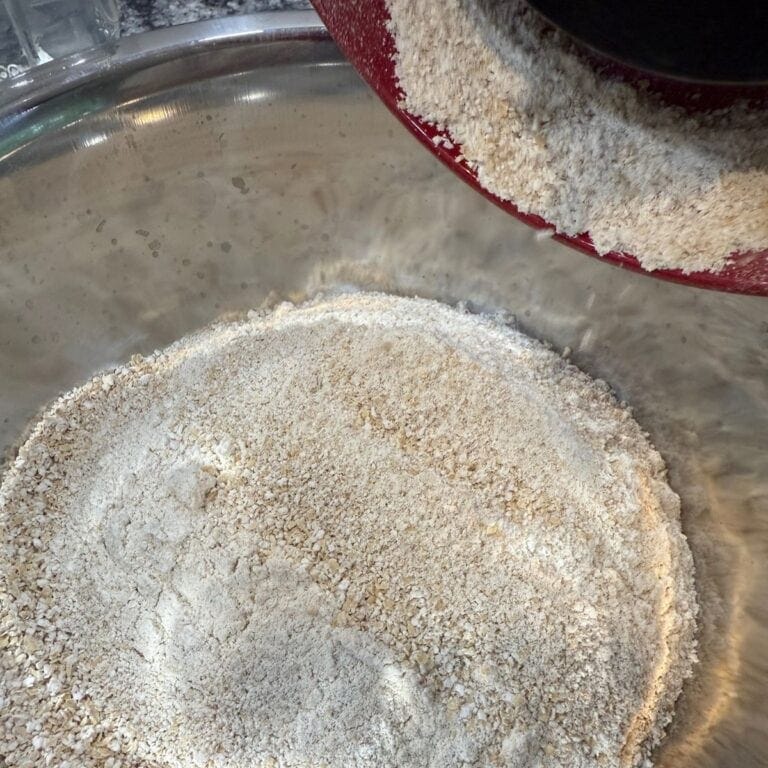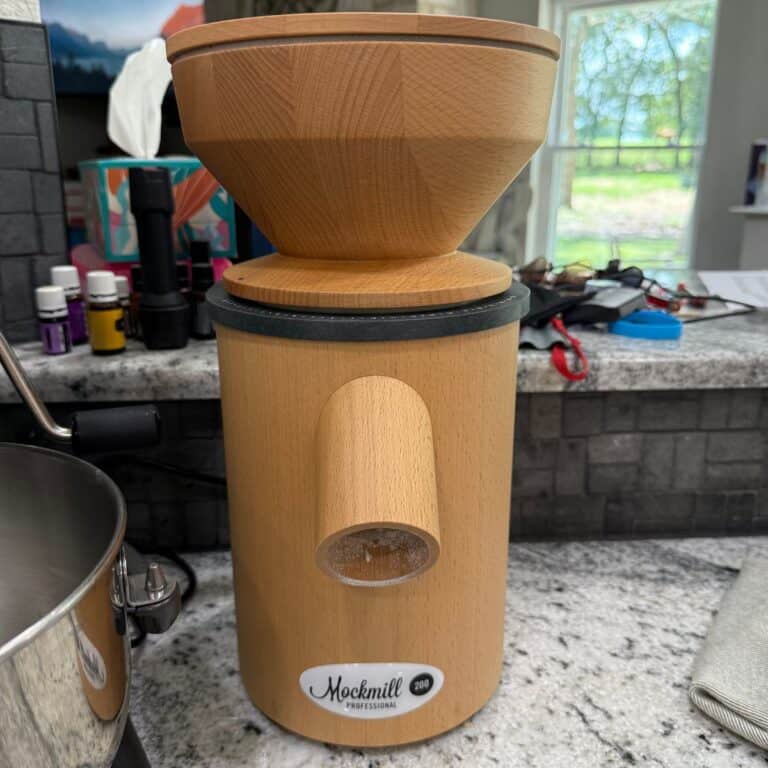Hydration and Autolyse: Why They Matter with Freshly Milled Flour
If you are new to freshly milled flour, there are two terms you need to be familiar with Hydration and Autolyse. This post will go in depth into both and why they matter when it comes to freshly milled grains.
As a mom, nothing feels more rewarding than preparing wholesome, nourishing meals that help my family thrive. That’s why I’ve fallen in love with freshly milled grains—they bring a whole new level of freshness and nutrition to the foods I bake.

Unlike store-bought flour, freshly milled grains still have all their natural bran and germ intact, which means more fiber, vitamins, and flavor in every bite. You can read more about the health benefits of freshly milled flour here. But working with these grains also means learning a few new baking techniques to get the best results.
Two of the most important techniques I’ve discovered are hydration and autolyse. Hydration is all about how much water your dough absorbs, and autolyse is a simple resting step that helps the flour fully soak up that water before you add yeast or salt.
When you’re baking with freshly milled grains, these steps aren’t just helpful—they’re essential. They make the dough easier to work with, help develop better texture, and bring out the rich, nutty flavors that make homemade bread so special.
Understanding hydration and autolyse has truly transformed the way I bake for my family, helping me create breads and baked goods that are not only delicious but deeply nourishing.
In this post, I’ll share why these techniques matter so much when using freshly milled grains—and how you can use them too, to bring the best to your own family’s table.
What is Hydration in Baking?



When I first started baking with freshly milled grains, I quickly learned that hydration plays a huge role in how my dough turns out.
Simply put, hydration is the ratio of water to flour in your dough. It’s usually expressed as a percentage—so if you use 100 grams of flour and 70 grams of water, that’s 70% hydration.
Why does this matter? Well, hydration affects everything from the texture of your dough to how the gluten develops, and ultimately, the crumb of your bread. More water generally means a softer, more open crumb and a dough that’s easier to work with. Less water can make dough stiff and dense.
With all-purpose flour, hydration levels usually hover around 60-65%. But freshly milled grains are a different story. Because they still contain the bran and germ—the parts of the grain that are packed with nutrients and fiber—they soak up much more water than refined flour.
The bran, in particular, acts like tiny sponges, absorbing water and interfering a bit with gluten formation, which is the stretchy network that gives bread its structure.
Because of this, when I bake with freshly milled flour, I always increase the hydration—sometimes to 75% or even higher—to make sure the dough stays soft and workable. The Peasant’s Daughter has a great Sourdough Calculator to calculate your bread’s hydration if you need help with calculating.
If the dough doesn’t have enough water, it feels dry, crumbly, and tough to knead, and the bread often turns out dense and heavy. Getting the hydration right is key to making breads that are light, tender, and full of flavor—perfect for nourishing my family every day.
What is Autolyse?
When I first heard about autolyse, it sounded a little mysterious—but now, it’s one of my favorite baking secrets, especially when working with freshly milled grains.
Autolyse is a simple but powerful technique that was developed by a French baking professor named Professor Raymond Calvel. It involves mixing just the flour and water together and letting them rest for a period of time before adding yeast and salt.
This resting period might seem like a small step, but it makes a big difference. During autolyse, the flour fully absorbs the water, which kickstarts gluten development and helps the dough become more elastic and easier to handle.


It also allows enzymes in the flour to start breaking down starches and proteins, which improves the dough’s extensibility—meaning it can stretch without tearing.
When you’re using freshly milled grains, autolyse becomes even more important. Because the bran and germ particles are still present, they can make the dough feel rough and interfere with gluten formation.
The autolyse rest helps soften these bran and germ bits, allowing them to absorb water better and integrate more smoothly into the dough. This means the gluten network can still develop well, even with all those nutritious whole grain parts in the mix.
The result? A dough that’s easier to knead and shape, with a better rise and a more tender crumb. Plus, autolyse helps enhance the natural, nutty flavors of freshly milled flour, making your bread taste even more wholesome and delicious.
For freshly milled breads, I often extend the autolyse time a bit—roughly 8-10 hours—to give the bran and germ plenty of time to soften and hydrate. It’s a small step that makes a big difference in the final loaf, helping me bake breads that truly nourish my family from the inside out!
Baking with freshly milled grains has been such a rewarding journey for me, and understanding hydration and autolyse has truly transformed the way I nourish my family through homemade bread.
If you’re new to freshly milled grains, I encourage you to be patient and experiment a little—try out our easy Freshly Milled Whole Grain Sourdough Bread with varying levels of hydration – every batch might feel a bit different, and that’s okay! With a little practice, you’ll find the perfect balance that works for your recipes and your family’s tastes.
The benefits are well worth the effort: dough that’s easier to handle, bread with a beautiful texture, deeper flavor, and of course, the wholesome nutrition that only freshly milled grains can provide. Baking this way is one of the best ways I know to show love through food—nourishing my family with every loaf made from scratch.




